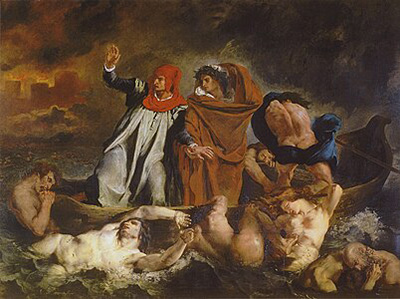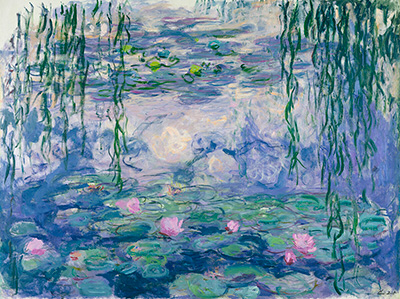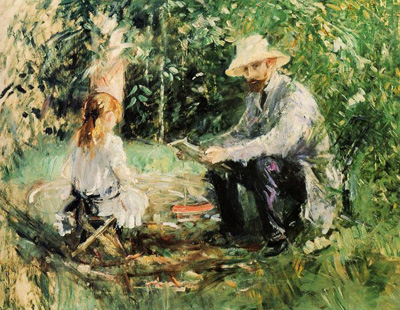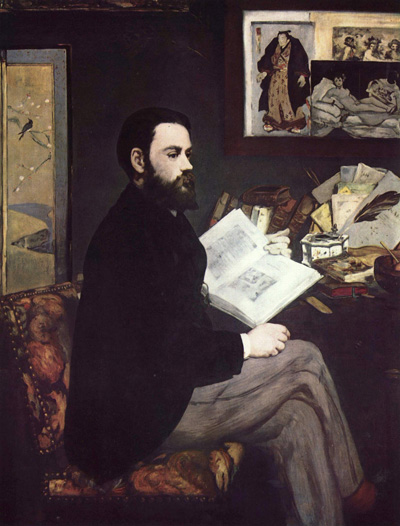Impressionism, inarguably one of the most influential movements in art history, emerged in France during the late 19th century which irreversibly altered the course of artistic expression and art itself. This movement revolutionized traditional artistic conventions and ushered in a vanguard system of representation, paving the way for what we know refer to as modern art. Below are several factors that contributed to the development of Impressionism, an art movement that has not only transformed the techniques employed in painting, but also the purported purpose of art itself.
1. A Distinct Departure from Tradition
 Courtesy of Musée du Louvre
Courtesy of Musée du Louvre
During the 19th century, the French art scene was dominated by the classical and correspondingly rigid standards of the Académie des Beaux-Arts which maintained centuries old painting styles such as romanticism that were characterized by precise draftsmanship, historical, royal, religious, or classic mythological subject matter, and meticulous, borderline fastidious attention to detail. Disillusioned by these rigorous constraints and eager to explore new subjects incurred and inspired by the rapidly changing landscape of Paris, transformed by urbanization and industrialization, and a newly financially emancipated bourgeoisie, avant-garde artists sought to portray their realities with new techniques.
2. The Salon and Its Impact
The annual Salon de Paris, organized and publicized by the Académie des Beaux-Arts, served as the preeminent space for artists to exhibit their work to both the lay public and wealthy collectors, thereon gaining recognition. However, the Salon’s conservative jury violently rejected any artwork that fell outside of its extremely selective classicalist criteria, which stifled the proliferation of innovative artists seeking to make a name for themselves.
3. Navigating Bike Lanes and Streets
 Courtesy of Musée Marmottan-Monet
Courtesy of Musée Marmottan-Monet
The term "Impressionism" was coined in 1874 when a group of artists, including Claude Monet, Pierre-Auguste Renoir, Edgar Degas, and Camille Pissarro, exhibited their paintings in a groundbreaking independent exhibition. The exhibition, held at the studio of the photographer Nadar, showcased artworks that defied traditional artistic conventions, emphasizing the artist's subjective impression of a scene rather than a literal depiction.
4. Painting “En plein air”
 Courtesy of the Berthe Morisot Museum
Courtesy of the Berthe Morisot Museum
Impressionist artists employed a revolutionary approach to painting, characterized by loose brushwork, vibrant colors, and an emphasis on capturing the transient effects of light and atmosphere. They often worked en plein air, painting outdoors to directly observe and capture the changing nuances of natural light.
5. Influences and Inspirations
 Courtesy of Musée D’Orsay
Courtesy of Musée D’Orsay
The Impressionists drew inspiration from a variety of sources, including Japanese woodblock prints, photography, and scientific discoveries in optics and color theory as well as depicting scenes from everyday life. They were particularly interested in the works of the Barbizon School painters, who also advocated for painting outdoors and prioritized the direct observation of nature.
6. Legacy and Influence
Gradually, impressionism gained global recognition and critical acclaim. Its legacy profoundly influenced subsequent movements that prioritized experimentation with artistic expression and pushing the boundaries of what can be considered art. These movements included Fauvism, Cubism, and eventually abstract expressionism.
The origins of Impressionism were massively rooted in a desire for liberty of artistic expression beyond the constraints of academic tradition and composing an art form that aligned with a changing modern world where mythology and religion were displaced by everyday life. Through their innovative techniques and radical departure from convention, the artists of the Impressionist movement revolutionized art and left an indelible mark on art history.